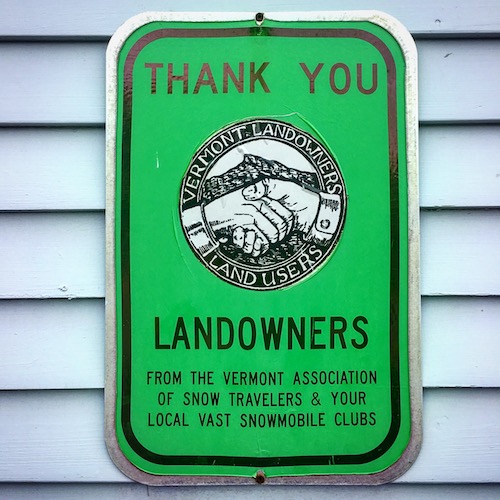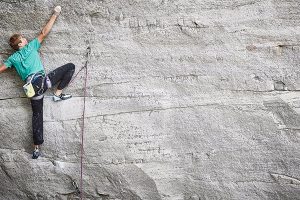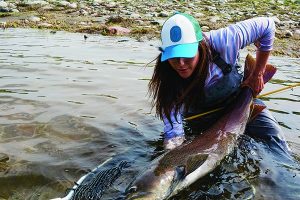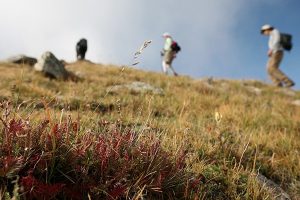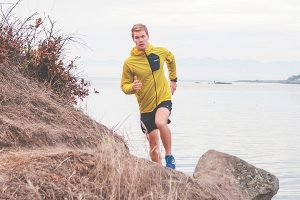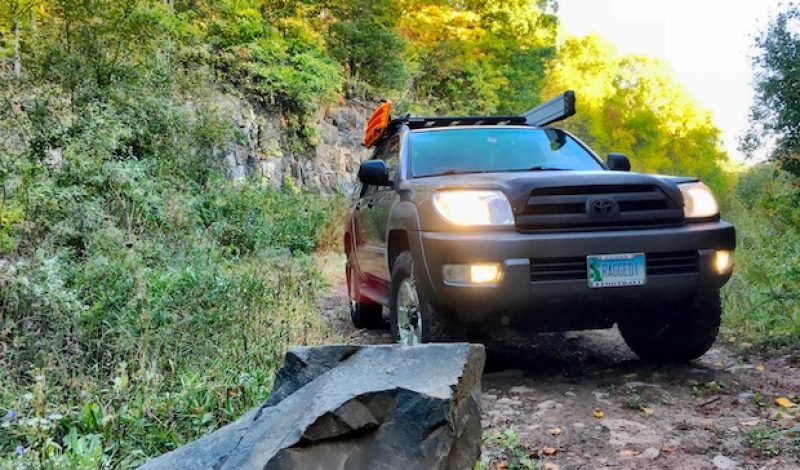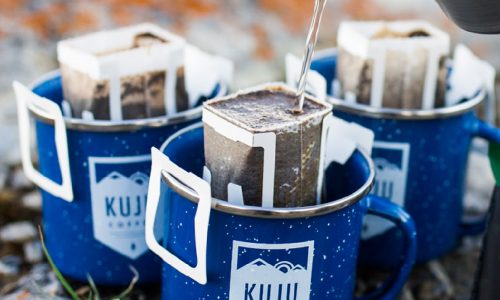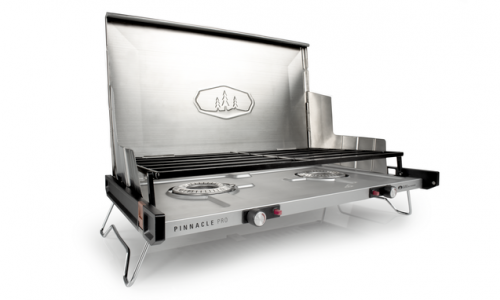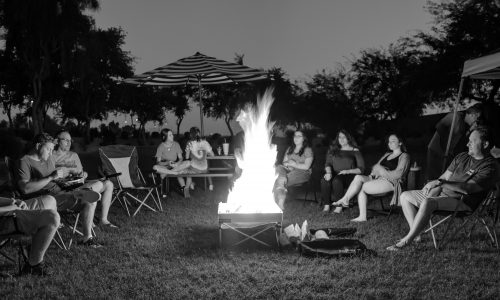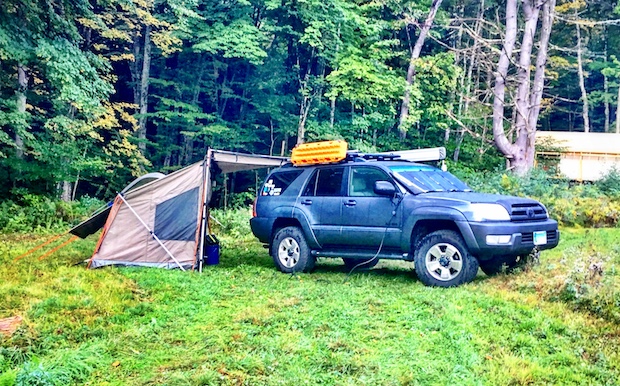
When I was sixteen, my father and I hunted down a cherry red, 1985 Chevy S-10 4×4 pick-up truck which would serve as my first vehicle. It was totally stock except for a Blaupunkt head unit that I’m certain was the bulk of the asking price. The vehicle had lived one hell of a life before coming to me, but in a very short period of time it would live one hell of a life with me as well. On the way home from buying the truck, I saw a trail off the side of the road and shifted into four-wheel-drive, thus beginning a long, expensive, and awesome relationship with off-roading. Over the years, while pursuing this habit, I’ve found myself wandering over endless tracts of land joined by like-minded friends, and – more recently – a family who enjoys exploring old farm roads and trails just as much as I do. I guess you could say off-roading to remote destinations has kind of been a thing for me for almost twenty years.
In Australia, this would be considered overlanding – well, sort of – maybe more like “overlanding lite.” The Aussies tend to get out into the wilderness and drive for days – sometimes weeks – with no real destination in mind. They end up camping in the wild and by its very definition, overlanding is more about the journey and not the destination. I always have an endpoint in mind or at least I always know we’re going to drive for a few hours, end up at a campsite, and then drive back again in a few days. Whether I know the exact place or not when I get into our family adventure vehicle is a another story completely.
Recently I had the opportunity to partake in some vehicular exploration in Vermont with my brother. I spent the week prior planning the “off-road” route we would take from town to town by utilizing a website launched by the state late last year. This site contains all of the main roads and Class IV highways (old farms roads and established trails that aren’t really suitable for sedans), the latter of which don’t show up on any GPS maps. From Brattleboro to Putney, which is about 12 miles by road, we drove a course through farms, fields, streams, and woods. What would have been a leisurely thirty-minute drive turned into an overly technical, three-hour traverse completely in four-wheel-drive. Because these trails are somewhat established, this isn’t pure off-roading, but it sure as hell was bumpy, beautiful, and slow going. In the end, we arrived at our friends small farm in Putney just in time for a tumbler of bourbon and to set up camp before the rain took over the valley for the evening.
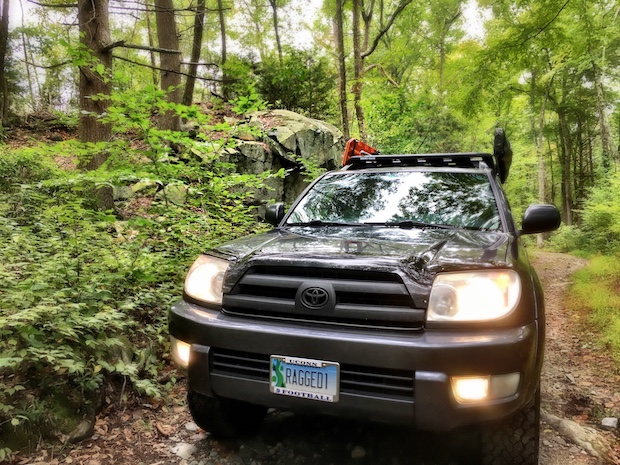
Looking back, there’s no real classification for what we did out there. It was too short and stationary to be considered overlanding and too long to be considered off-roading. But I haven’t been categorizing these wanderings for the past twenty years; so I find it hard to do so now. Either way, it was a ton of fun and we didn’t run into any technical issues on our way in or out. In the end, I didn’t sleep much for two days – opting to soak in sunrises as well as sunsets. But I did get to traverse some technical terrain and test out some new gear, both on my Toyota 4Runner and at camp. All in all, the experience still has quite a hold on me – like these things always do. Even a few days removed, the mindset still lingers and I’m having trouble splitting up my time writing this article and planning out the next adventure. With fall finally here in New England, that next outing can’t come quickly enough. But, I digress – let’s dig in.
Part One: The Vehicle
The key to any successful vehicular excursion is the right vehicle. You want something with four-wheel-drive, good ground clearance, and the ability to hold all of the gear you need – either inside or on the roof. Because they meet these criteria and are also rugged, reliable, and easy to adapt to almost any terrain and situation, Jeeps, Land Rovers, and a variety of Toyota models are all the rage when it comes to off-road adventures. I’ve owned a few vehicles like this over the years and my current ride of choice is my 2005 Toyota 4Runner SR5. Named “Triceratops” by my daughter Penny. It has 189,000 miles on the odometer, 3” of suspension lift, new springs and struts, and big knobby tires. It’s big enough to carry people and gear, but it’s small enough to get through tight trails making it ripe for an adventure anywhere and anytime.
In addition to the right vehicle, the right assortment of accessories for the vehicle is crucial. You need to get in the mindset of being self-sufficient and approach each off-road and overland adventure as if you were out there on your own. Organization plays a huge role in how successful your journey will be. The ability to have core tools and accessories at the ready can really save the day – especially if something goes wrong. Unlike hiking and biking, you have a machine designed to carry you and all of your gear, so my recommendation is to capitalize on your situation and bring whatever you think you need – and then some. This sort of technical driving can get a little stressful, so you’ll definitely want to be comfortable once you stop for the night.
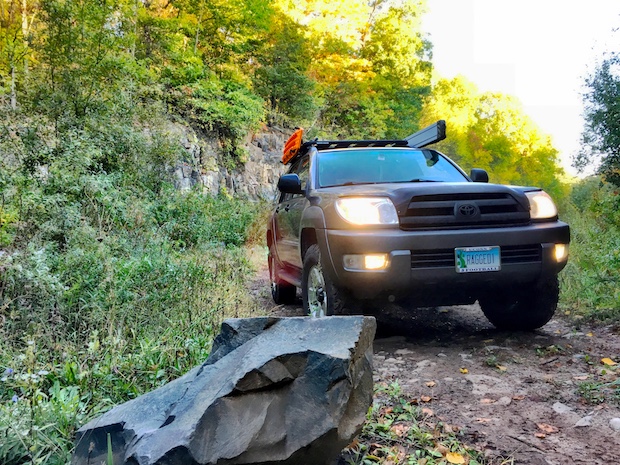
That being said, the following is a collection of equipment that I used for this expedition and will continue using for years to come. Just like backpacking, you start to rely on a particular set of gear, and the following items are what I would recommend to anyone setting out into the unpaved and unknown. (Hell, I’d recommend this stuff for people going just about anywhere, but that’s just me. I always like to be prepared.) But, as each vehicle is different, consider this part of the guide a good launching point on how you would approach your expedition.
Needful Things:
The following is a general list of gear that I didn’t really think needed much explanation. Consider this a checklist of “must haves” and build on to it as you discover other things that you rely on to keep you upright and self-sufficient on the trail.
• Hi-Lift Jack & Four-Way Lug Wrench
• Tow Rope
• Jumper Cables
• Tool Kit (specific to your vehicle’s needs)
• Full-Size Spare Tire
• Spare Key (trust me)
• Cash (farmer’s don’t take credit cards)
Roof Racks:
Roof racks are essential as they allow you to not only expand your storage capacity, but also provide a place for you to store things on the exterior of the vehicle that may not fit or that you may not want to carry inside. In some cases, they could even provide you a place to sleep depending on your situation or setup. Overall, the stuff you store on these racks is generally the gear you’ll end up using during your journey, including tools, tow ropes, extra fuel, and so on. By storing them on the roof rack, they can be accessed when needed without much fuss (or disrupting the OCD level of organization inside of the vehicle).
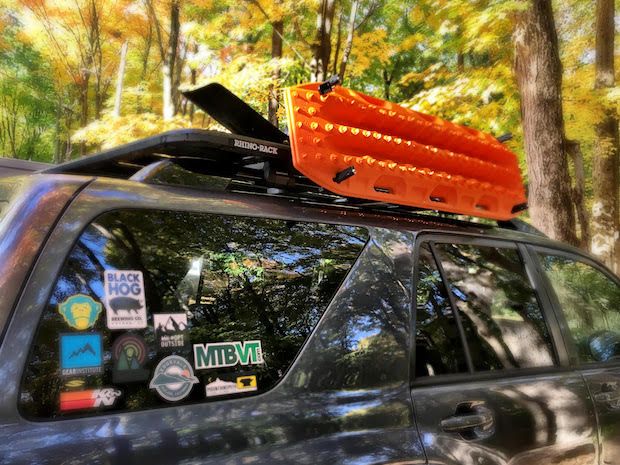
The Base Rack:
Rhino-Rack Pioneer SX Platform
The Rhino-Rack Pioneer SX Platform is a complete package that consists of the company’s Vortex SX base rack system for factory raised rails and their 60” x 49” Pioneer Platform. Unlike their competitors, Rhino-Rack rates their rack systems and accessories for off-road use, so this system not only proved to be versatile, but universally utilizable too. If you already have a roof rack system, you can buy the Pioneer Platform separately. Bottom line: If your vehicle can take a platform, use one. They are far more versatile than a basket or box.
Essential Roof Rack Accessories:
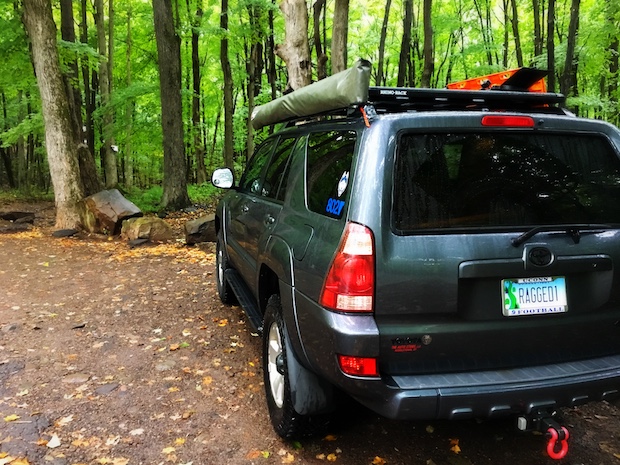
Rhino-Rack Foxwing Awning
Awnings give you the ability to set up shelter in the moment when you need it. Unlike standard vehicle awnings that generally offer one direction of coverage, the Rhino-Rack Foxwing awning offers 270 degrees of UV coated, waterproof coverage that ranges from the side of your vehicle that it is mounted on, all the way to the back, and beyond. The Foxwing is easy to install, deploys in record time, and comes complete with support legs, guyline ropes, and adjusters. The Foxwing Awning is available in both driver’s side and passenger side models.
Maxtrax Vehicle Recovery Device and Rhino-Rack Pioneer Recovery Track Side Bracket
Maxtrax is a vehicle recovery device that makes getting your vehicle un-stuck from mud and sand simple and safe. Sold as a pair, these come in handy whether you have a winch or not, requiring you only to jam them under your tires and begin driving. For easy vehicle storage and accessibility, look no further than Rhino’s Pioneer Recovery Track Bracket. This specially designed bracket mounts off of the side of the Pioneer Platform keeping the main surface freed up for spare tires, luggage, and jerry cans.
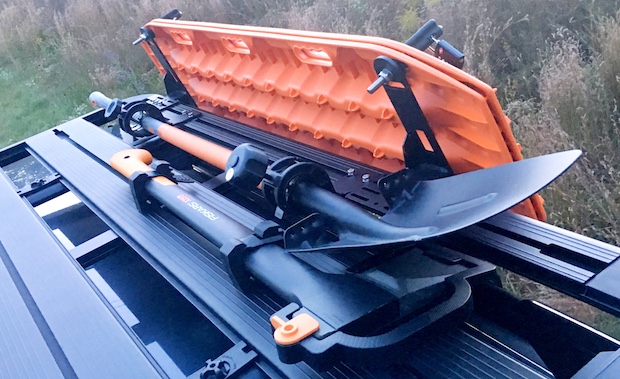
Rhino-Rack Shovel and Rhino-Rack Shovel Holder
Do you really need a $90 shovel from Rhino-Rack? No, but if you want something that is designed to survive all of the conditions you’ll encounter on the roof of your vehicle, and can be used and abused along the way, you should really consider it. Couple it with the Rhino Shovel Holder and you can store it safely and securely, while still being able to access it on the go. Note: The shovel holder can be mounted to the backside of the Pioneer Recovery Track Side Bracket to further minimize its footprint on the platform.
Fiskars X25 Splitting Axe and Quick Fist Universal Mount
The Fiskars X25 is a powerhouse of a splitting axe designed to make small work out of firewood and trees out on the trail. Featuring a 28” fiber-comp handle and a head lathered in a corrosion resistant, low-friction coating, the X25 is designed to live and work in any weather condition. Additionally, its unique power-to-weight ratio allows you to keep on swinging without any premature fatigue. To mount it to the Pioneer Platform, I opted to use the simple and affordable Quick Fist Tool Clamp and some universal C-Channel hardware I had left over from my days designing racks.
Additional Vehicle Accessories:
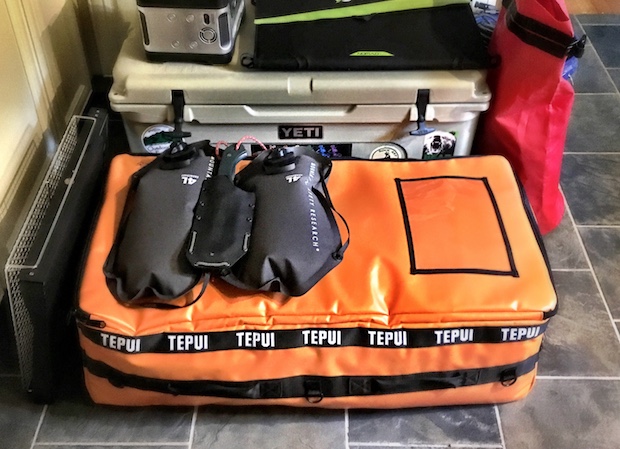
Tepui Expedition Series Gear Container
Made from high-strength, resin-impregnated polyester, and featuring multiple lashing points, internal dividers, and wheels, the 120 liter Tepui Expedition Series Gear Container works just as well in the back of your vehicle as it does strapped to your roof. I was able to fill it with all of our soft goods: sleeping bags, clothing, towels, as well as camp chairs, tables, etc. The only limit to the uses of this masterpiece is your ability to lift it once it is full.
SealLine Waterproof Map Case
Though this isn’t really a vehicle accessory, the SealLine Waterproof Map Case comes in handy to protect the maps you’ll find yourself relying on out on these wayward trails. Technology is starting to catch up, but I’ve yet to find a GPS that recognizes all the driving trails in a given area, so printed maps are a godsend. When they’re the only way to define how you get in and out, and all around – you do anything you can to keep them from getting destroyed by muck and mire.

Smittybilt Receiver Hitch D-Rings
Big, burly steel bumpers and winches are a logical – but hefty – investment that are nice to have but not always necessary. I’m fairly certain that Maxtrax will get you out of almost any jam, but if you get in too deep there’s nothing like a Smittybilt Receiver Hitch D-Ring. The chances that you’ll have a 2” hitch on your vehicle are high, and this unit plugs right in and acts as a secure and safe point to pull you out of trouble. Tip: Paint the ring a bright color so it can be spotted in the dirt and mud.
ARB Fridge Freezer 37 QT
Because these expeditions are designed to take a while, most overlanders rely on a portable refrigerator/freezer unit like the ARB Fridge Freezer 37 QT. Requiring only 1.37 amps of power from a 12 volt power source to keep it ice cold, the 37QT model doesn’t require any power inverters or additional power sources to run and takes up about the same space a cooler of the same volume would. On top of that, this rugged unit also runs on 110v power, so you can use it as a beer fridge when you get home.
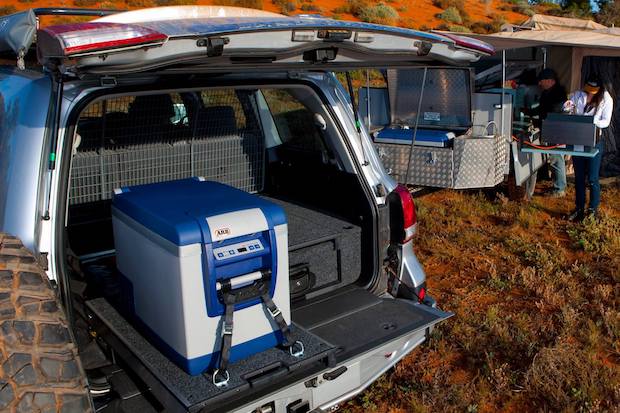
Part Two: Base Camp
Location plays a big role in your experience in the backcountry. In some cases you may just be stopping for a few hours to relax, eat, and maybe plan on the next leg of your trip. But, at other times you might be stopping off for a day or two. When you’re out in the open country you have a lot of options. I recommend either landing on a beach or finding a place surrounded by trees and mountains that is close enough to a running river to provide you with plenty of water and a soothing soundtrack to help you sleep.
Because weight and capacity aren’t issues here, free feel to live a little and bring gear along that allows you to weather any storm while still living comfortably. For example, I seriously considered bringing a full-sized outdoor area rug. When I set up base camp, I truly dig in.
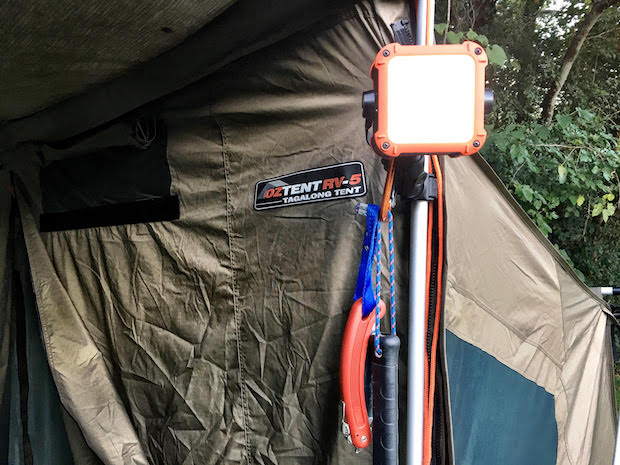
Rhino-Rack Tagalong Tent
If you already have a Rhino Rack Foxwing Awning in place on your vehicle, the 2-3 person Tagalong tent is a no-brainer as it zips right into the outer edge of the awning and sets up in under ten minutes. Made from the same UV Coated, waterproof, rip-stop polycotton canvas as Rhino-Rack’s awnings, the Tagalong also features a heavy-duty tarpaulin floor, which managed to get us through a massive storm without a drop of water inside. The Tagalong tent is made for sleeping, but not necessarily communing with nature. You can pimp out the Foxwing with additional walls, floors, screen rooms, and tents if you need more living spaces however.
Orange Screw
Made from recycled materials here in the United States, the Orange Screw is more of an anchor than a tent stake. By screwing into the ground it provides a stronger hold than the average tent stake and I can attest that it saved our arse’s a couple of times in high-wind situations. One or two will do, so there is no need to replace all of your tent stakes, unless you plan on camping in a tornado.
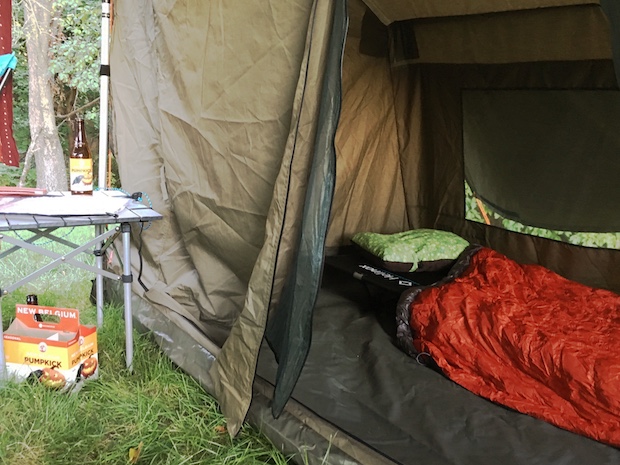
Helinox Cot One
Resembling something designed by NASA, the Helinox Cot One is an innovative and lightweight cot destined to surprise you with how comfortable it is. With a pack weight of less than 5lbs, this cot sets up in minutes with a tricked out trigger-actuated system and provides a drum-skin tight surface that is elevated off of the cold, unforgiving ground. After sleeping on this cot, I have no need to ever sleep on a sleeping pad again – and you won’t either.
Kammok Firebelly Trail Quilt
The Kammok Firebelly Trail Quilt is a durable, lightweight, hydrophobic-down blanket that is rated to 30°F. It comes in very handy when you’re sitting around the fire at night, making a quick mid-night trip to the outhouse, or as an extra blanket in bed. What’s more, the Firebelly easily converts to a minimalist sleeping bag if you decide to sleep out under the stars, or need more warmth in your mummy bag. And if that’s not enough, you can set the Firebelly up as a heat wall for a makeshift shelter too, as its topside is designed to reflect heat.
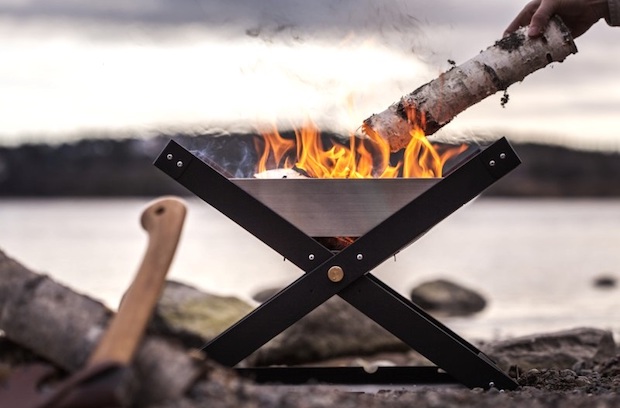
Primus Kamoto OpenFire Pit (Available Late Fall 2016)
The yet-to-be-released Primus Kamoto OpenFire Pit is a portable, briefcase style fire pit that allows you to have a fire in places where you normally might not be able to without having to do any site prep. Fully enclosed, and featuring an optional top grate for cooking, the Kamoto came in handy by the tent each night by the tent and was essential for heating up our coffee in the Coleman 14 Cup Percolator each morning.
MSR Dromedary Bags (Available Spring 2017)
For years MSR Dromedary Bags have proven to be the penultimate solution for carrying and storying large quantities of water on location. MSR was kind enough to supply me with two of their redesigned 4-liter bags constructed from hydrophobic, 1000D fabric and feature a food grade liner to keep the funk down. These “Drom Bags” are perfect for hanging from tree branches or off of your side view mirror, and are great for drinking water, taking showers, and so on. Another super nice feature is that the MSR Guardian or MiniWorks EX water filters screw right into the Drom Bag for direct pump, fresh water fills.
Gear Aid Arc Lantern
When I received the Gear Aid Arc lantern, it only had 2/3 of power left in its batteries and I didn’t have a chance to charge it before we left for the trip. All told, the Arc lasted through two nights while throwing an impressive adjustable beam (both in intensity and temperature), before it had to be recharged. Pairing the Arc with the RAM Claw Light Mount allowed me to find more places to carry it and attach it. I can happily attest that there’s nothing like a fully illuminated outhouse.
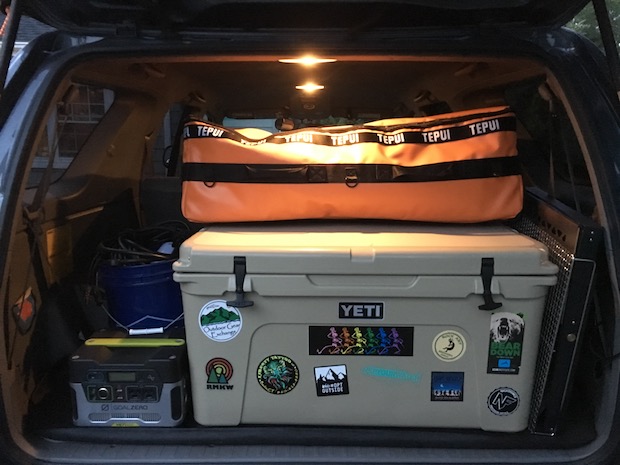
Goal Zero Yeti 400 and Nomad 100 Panel
I’ve long relied on the Goal Zero Yeti 400 to supply me with 300 watts of power for emergencies in the house and out on my adventures, but for this trip I traded in my four bulky Boulder 30 Panels and tripod for the streamlined and effective Nomad 100 panel. True, I lost 20 watts of potential power (Nomad 100 = 100W, 4x Boulder 30 = 120W), but what I gained in ease of use and effectiveness was immeasurable. I’ll mount the Boulder panels on the roof of the cabin and rely on the Nomad 100, which is a 1/8th of the bulk and 1/3rd of the weight, for these vehicular escapes.
Well there you have it – a pretty well rounded list of gear for off-roading and overlanding adventures. Because these types of escapades rely on a vehicle that meets certain, aforementioned, criteria, focus on getting your adventure vehicle dialed in and go out on some test runs before setting off on a longer excursion. I speak from experience when I tell you that stuff breaks all the time out there. Tires blow, struts snap, and things get dented. But with the right tools – and a little experience of your own – you can make these occurrences easier to deal with or eliminate them all together. I haven’t blown a tire on the trail in over a year. Maybe that’s just good luck on my part, but I think it’s because I’m not trying to be a hot shot out there like I did when I was a kid. (I once jumped this massive ravine with this old Ford Bronco we all pitched money into and fixed up.)
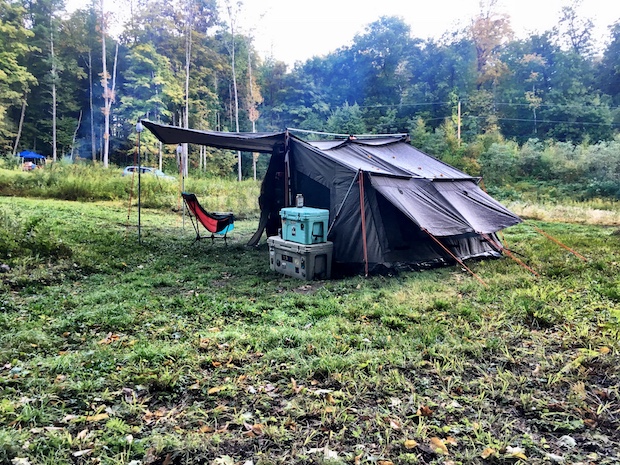
Ultimately, these vehicular adventures will probably never replace backpacking and hiking for me, but I’ll always have an itch to drive off to remote, hard to reach locations. As it is, I probably go off-roading at least once a week, sometimes just driving on a mile long dirt path. Maybe I do it to keep my technical driving skill sharp. Maybe I do it because I need to justify the investment I’ve put into my 4Runner. I don’t really know for sure. But I do love getting out there in the middle of it all and exploring – especially with my wife and daughters in tow.
Remember, unlike when you go backpacking, you’re not the pack mule here – the vehicle is. So feel free to bring along gear that makes you comfortable, both during the journey and when you get to base camp. You’re heading out into the middle of nowhere without having to exert much energy along the way. And when you get to your destination you can always go exploring on foot if you choose, and you’ll also get the chance to camp underneath wide-open skies in a places full of wildlife and unhindered nature. It truly is modern zen for the outdoor enthusiast.
Be comfortable, be safe, and be self-reliant.
